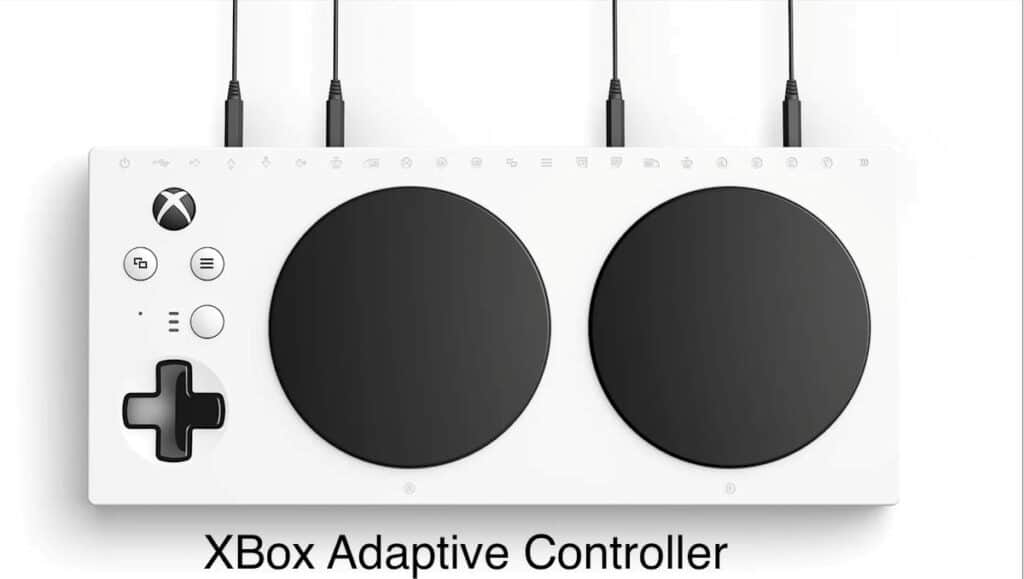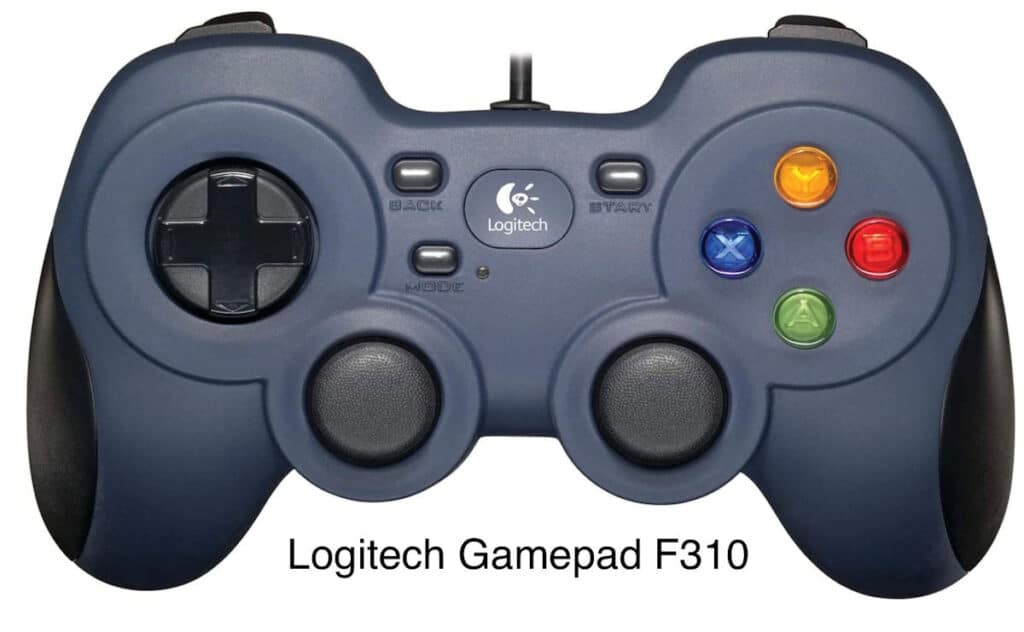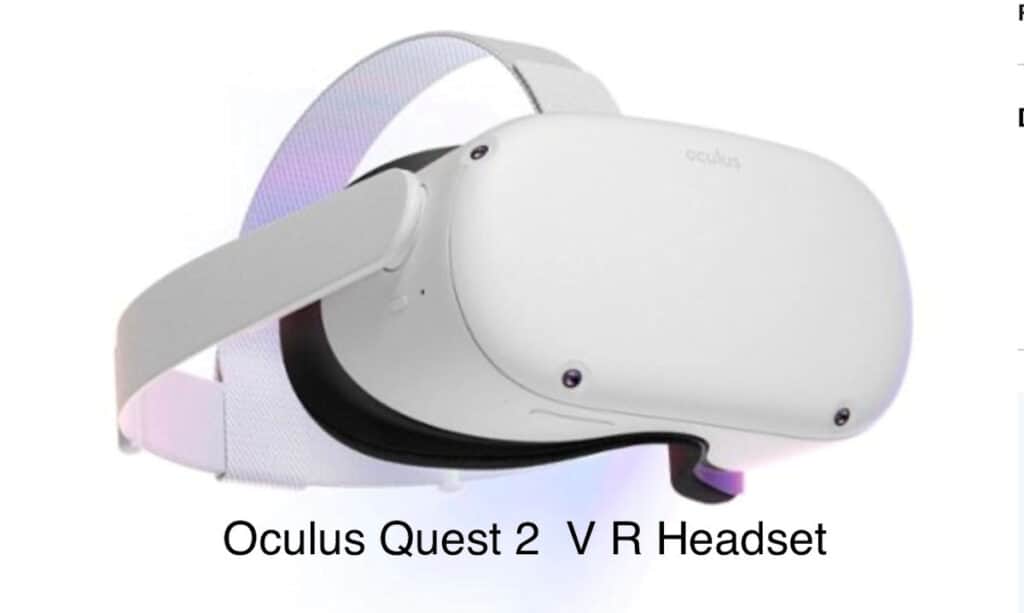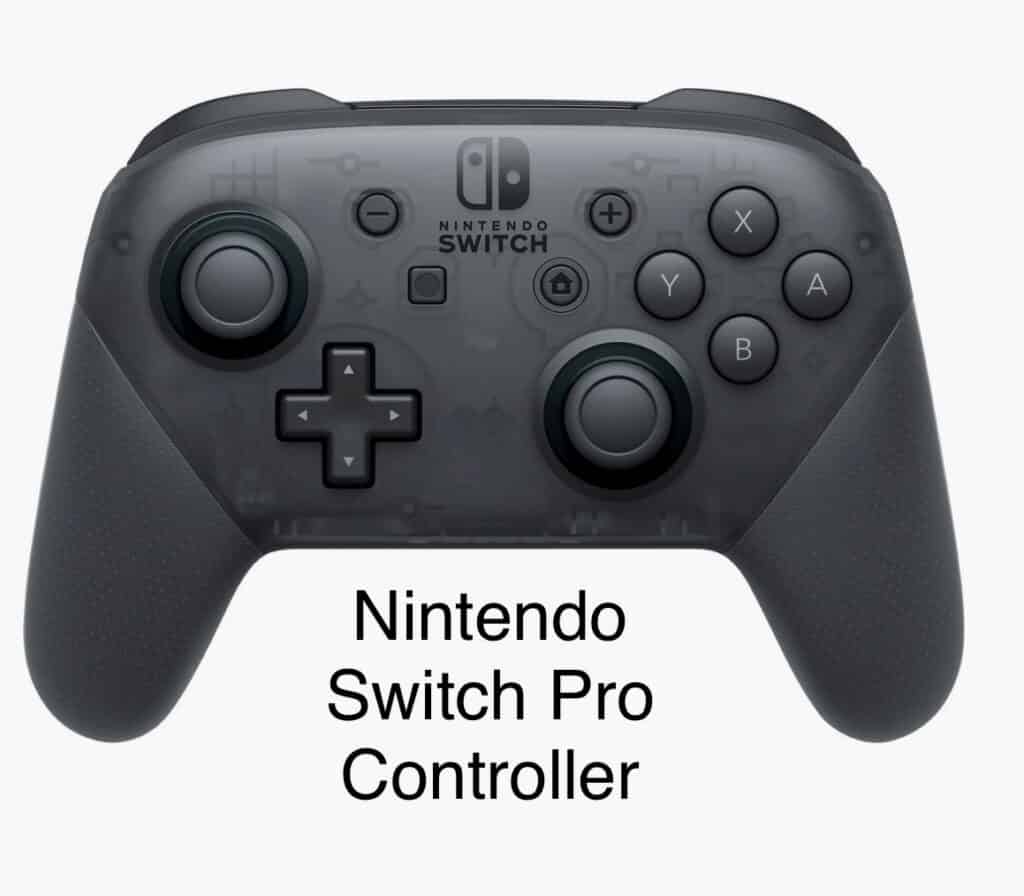Visually impaired gamers can enjoy gaming with ease thanks to customizable controller settings, accessible gaming consoles, and games that are compatible with accessibility features. With a large screen to enhance the gaming experience, those with low vision can join the fun.
Gaming technology is making it possible for visually impaired individuals to immerse themselves in the world of video games.
Here are some steps you can take to set up accessible video games.
Step 1: Determining what accessibility features are needed and evaluate the options
The first step in setting up accessible video games is to determine what is needed based on the level of vision. This will help you understand what adaptations or modifications are necessary to make the games accessible. There are different levels of visual impairment, and understanding your child’s level of vision will help you choose the right games that fit their abilities.
As an adult, your needs will be important factor in helping to select a video game system. Accessibility features to consider:
Screen Reader can read aloud the text on screen and provide audio descriptions for elements on the screen, such as text and buttons for navigating the console.
Magnification, referred to as Zoom, to control the size of text on the screen.
Customization ability to control color filters, sound, contrast, controller options, and short-cuts. High contrast can help you distinguish between items and text on your screen.
Voice control utilizes an assistant like Amazon Alexa or Google Assistant. The digital assistant is used to turn the console on and off, start and stop play, and launch apps, videos, and games.
* There is an addendum at the bottom which explains how these features are used by the visually impaired for those readers not familiar with these technologies.
Some examples of accessibility features offered by well-known gaming systems:
Xbox has an accessibility feature called “Narrator” that provides audio descriptions of on-screen menus, game settings, and other in-game elements.
The Nintendo Switch also offers an accessibility feature called “Speak with IRIS,” which provides audio descriptions of what’s happening on the screen.
Sony’s PlayStation 5 and PlayStation 4 consoles offer accessibility features like Text-to-Speech, which reads on-screen text out loud, and Audio Description, which provides additional auditory information about in-game events and actions.
It’s worth noting that not all games are compatible with these accessibility features, but many modern games are designed with accessibility in mind and include features that make them more accessible to players with visual impairments.
Desk top or laptop computers as gaming systems.
Computers have screen readers, magnification, and high-contrast settings as a part of the accessibility settings and customization options standard on most platforms.
Voice recognition software can be uploaded to a PC or laptop which allows players to control the game using voice commands, which can be particularly helpful for visually impaired players who have difficulty using a mouse or keyboard.
Alternative input devices: Visually impaired players may use alternative input devices, such as a joystick, gamepad, or keyboard overlay, to control the game instead of a standard mouse and keyboard.
It’s important to experiment with different features and settings to find the ones that work best for each individual player.
Choose an accessible, easy to use controller. These are just a few examples of video game controllers that are accessible for the visually impaired. (Examples, not endorsements, not a complete list.) Remember to research and test different controllers to find what works best for you or your child. It’s also important to consider the game that will be played, as some controllers may be better suited for certain types of games. (Ex: Racing vs fighting)
- Xbox Adaptive Controller – The Xbox Adaptive Controller is designed for gamers with disabilities, including the visually impaired. The controller features large programmable buttons and can be customized with a range of external devices such as switches and joysticks. It is unique because it is modifiable for those with other disabilities. Ref: You Tube TWIT Tech Podcast

- Switch Pro Controller – The Switch Pro Controller features a large button layout and a comfortable grip. It can be used with the Nintendo Switch console and is compatible with a range of games.
- Razer Wolverine Ultimate – This controller features a range of programmable buttons, including two remappable multi-function buttons. It has a comfortable grip and can be used with Xbox consoles and PC.
- Hori Fighting Commander – This controller is designed for fighting games and features a directional pad, six-button layout, and turbo function. It can be used with a range of consoles, including the PlayStation 4.
- PS4 DualShock 4 – The PS4 DualShock 4 controller features a touchpad, motion sensors, and a comfortable grip. It can be used with a range of games and is compatible with the PlayStation 4 console.
- Logitech Gamepad F310 – This gamepad features a comfortable grip and a classic button layout. It can be used with a range of games and is compatible with PC.


A large screen or monitor can be the most helpful accessibility modification for visually impaired video gamer as it allows them to better see the game’s graphics and details. With a larger display, the on-screen elements of the game, such as text, characters, and objects, can be more easily distinguished and interpreted by the gamer. This can be particularly important in games that require precise timing or quick reactions, as a larger screen can help gamers to react more quickly to on-screen events.
In addition to providing better visibility, a larger screen can also reduce eye strain and fatigue, which can be a common issue for visually impaired individuals who spend extended periods of time in front of a screen. By reducing the need to strain to see the details on the screen, a larger display can help to minimize eye strain and provide a more comfortable gaming experience overall.

Step 2: Choose accessible video games
Finding accessible video games can be challenging, but it’s not impossible.
There are various accessible video games available that are designed to be accessible to visually impaired gamers. Some popular accessible games include Audio Games, which are designed to be played entirely through sound. Additionally, many mainstream video games are also being designed to be accessible to visually impaired gamers, with features such as audio cues, voice-activated controls, and high-contrast visuals.
Audio cues and text-to-speech: Look for games that include audio cues and text-to-speech features that provide additional information about the game world and the player’s actions. These features can be particularly helpful for visually impaired players.
Video games should include an accessibility options menu where players can adjust settings to make the game more accessible. Developers can use this menu to highlight the specific accessibility features that are available in the game and provide more detailed information about how these features work.
Look for information about the game’s accessibility features on the game’s website or in marketing materials. This information can include details about audio descriptions, high-contrast modes, text-to-speech features, and other accessibility options that are available in the game.
Step 3: Set up the gaming environment
Once you have chosen an accessible video console and game, it’s time to set up the gaming environment. There are several tools and resources available that can help make video games accessible to visually impaired gamers.
The console or computer you chose should have on-board accessibility features, principally Zoom and text reading.
Next, select a high-contrast display and a larger screen to help make gameplay more accessible. The gamepad or controller should have tactile markings to help make for easier navigation.
Consider purchasing a pair of high quality, noise-cancelling headphones. A visually impaired or blind gamer learns to use the audio cues in the game that help with movement, orientation and anticipating action.
Another option is stereo speakers, set to either side of the gamer to help them locate the direction of sounds.
Step 4: Test and adjust
After setting up the gaming environment, it’s essential to test the game to ensure it is truly accessible.
For children, sit with them and observe how they play the game, and make adjustments as necessary. This might involve tweaking settings in the game or adjusting the gaming environment. It’s essential to work with your child to determine what works best for them and make changes accordingly.
Likewise, an adult will benefit by having someone sit with them for an initial walk-thru. The guide can explain sounds, scenes, obstacles, and the actions of other characters.
Be patient. It may take a little practice and some learning. Blind gamers talk about memorizing steps and audio cues.
Step 5: Explore and have fun
With the right tools and resources, video games can be an engaging and fun way for the visually impaired to explore new worlds and challenge themselves.
Encourage your child to explore different games and discover what they enjoy playing. Remember to keep an open mind and try new things to find what works best for you or your child.
Virtual Reality Headsets for Playing Video Games
Virtual reality (VR) headsets are devices that allow gamers to experience video games in an immersive, three-dimensional environment. The headsets typically consist of a high-resolution display that is split into two screens, one for each eye, to create a stereoscopic 3D effect.
VR headset s can be stand -alone units or, more typically, connected to a computer or gaming console, which generates the 3D graphics and sends them to the headset in real-time. Some VR headsets also include built-in motion tracking sensors, which allow the gamer’s movements to be tracked in real-time, enabling them to interact with the game world using natural movements.
The result is a highly immersive experience that makes gamers feel like they are inside the game world. For example, a VR headset might allow a gamer to explore a virtual world by moving their head and body, rather than simply pressing buttons on a controller. This can make the gaming experience much more engaging and interactive than traditional video games.
Benefits of Gaming with Virtual Reality Headsets for Accessibility
Virtual reality headsets can be a game-changer for visually impaired individuals who want to experience gaming and explore new worlds. Here are a few ways that VR technology can be adapted to meet the needs of visually impaired gamers:
Audio descriptions: Some virtual reality (VR) headsets and VR games do provide audio description that can be used by the visually impaired. These descriptions can be triggered when the gamer interacts with different objects in the game world, providing an auditory cue that describes the object’s appearance, location, and other important details.
The availability of audio description in VR games and experiences may depend on the specific game or platform being used. For example, some VR games like Blind, which is specifically designed for visually impaired users, include audio description as a core feature. Other VR games may not include audio description by default, but may offer it as a mod or add-on created by the community.
Haptic feedback: Many VR headsets already include haptic feedback technology, which uses vibrations to simulate the sensation of touch. This technology can be adapted to provide feedback about the gamer’s environment, helping them navigate and explore the game world. (More about haptic feedback, later.)
Voice commands: Another way to make VR gaming more accessible is to incorporate voice commands. This can be especially useful for visually impaired gamers, who may find it difficult to navigate using traditional game controllers. With voice commands, gamers can navigate the game world and interact with objects using simple voice commands. Examples of VR with voice commands: Oculus Quest 2, Valve Index, PlayStation VR, HTC Vive Cosmos and Windows Mixed Reality headsets, such as the HP Reverb G2, which supports voice commands through the Cortana virtual assistant. (Cortana is Microsoft’s digital assistant.)
Spatial audio: Spatial audio is a technique that uses 3D sound to create the illusion of sound coming from different directions. This can be especially useful for visually impaired gamers, who can use the spatial audio cues to navigate and explore the game world more easily.
There are several virtual reality (VR) gaming headsets available on the market for purchase, (Examples, not a complete list.):
- Oculus Quest 2 – A standalone VR headset that doesn’t require a PC or console to operate.
- Valve Index – A high-end PC-based VR headset with advanced motion tracking and controller features.
- HTC Vive Cosmos – Another PC-based VR headset with adjustable comfort features and inside-out tracking.
- PlayStation VR – A console-based VR headset that works with the PlayStation 4 and PlayStation 5.
- Oculus Rift S – A PC-based VR headset with improved optics and tracking features compared to its predecessor, the Oculus Rift.
- HP Reverb G2 – A PC-based VR headset with high-resolution displays and a comfortable design.
- Samsung Gear VR – A smartphone-based VR headset that works with select Samsung Galaxy smartphones.
- Google Daydream View – Another smartphone-based VR headset that works with select Android smartphones.
- Pico Neo 2 – A standalone VR headset with inside-out tracking and a comfortable, ergonomic design.
- Varjo VR-2 – A high-end VR headset designed for professional applications, with advanced resolution and tracking features.


These are just a few examples of the VR gaming headsets that are currently on the market. Each headset has its own strengths and weaknesses, so it’s important to research and compare different models to find the one that best suits you or your child.
More about wearable assistive devices for the visually impaired: Comparison of 14 Electronic Glasses for Use as Assistive Technology for Low Vision
What is haptic feedback?
Haptic feedback is a type of tactile feedback that provides users with a physical sensation or vibration in response to a particular action or event. In the context of video games, haptic feedback is used to enhance the gaming experience by providing players with a more immersive and realistic sensory experience.
Haptic feedback can be delivered through a variety of devices, including game controllers, smartphones, and wearable devices. For example, many modern game controllers feature vibration motors that provide feedback when the player performs certain actions, such as firing a weapon or crashing a vehicle. Smartphones and wearable devices can also provide haptic feedback through vibration or other types of physical feedback.
Haptic feedback is designed to enhance the gaming experience by providing players with a more tactile and immersive experience. It can be particularly useful for players with visual impairments or other disabilities, as it provides a way to interact with the game world using touch and feel . Ref: Android Central
Learn about adaptive sports for the visually impaired: Sports for the Visually Impaired
In the End…
Setting up accessible video games for the visually impaired can be challenging, but with the right tools and resources, it’s possible to provide an engaging and fun gaming experience. Remember to work with your child to understand their abilities and find games that match their interests. With the right adjustments, video games can be an exciting way for visually impaired adults and children to learn, explore, and have fun.
* Addendum
How text-to-speech and magnification software can be used to make video games accessible for the visually impaired
Text-to-speech and magnification software are essential tools for making video games accessible to visually impaired individuals. Here’s how each software can be used to improve accessibility:
Text-to-speech (TTS) software is designed to read text on a screen aloud. In video games, this can help visually impaired players navigate menus, read instructions, and receive in-game information. TTS software can also read dialogue and character interactions, which helps visually impaired players engage with the storyline and characters.
TTS software can be adjusted to read at different speeds, which allows visually impaired players to hear the information at a pace that suits their needs. TTS software can also highlight the text that is being read aloud, making it easier for players to follow along.
Magnification software (referred to as Zoom) is designed to increase the size of on-screen elements, making them easier to see. This is particularly helpful for visually impaired individuals who have difficulty reading small text or distinguishing details in images.
In video games, magnification software can be used to increase the size of in-game text, maps, and other on-screen elements. Some magnification software can also enhance contrast, making it easier to distinguish between different colors and elements on the screen.
Magnification software can also be used in conjunction with screen readers to provide a more comprehensive gaming experience for visually impaired players.
An aside, consider two other forms of magnification: distance and size.
Distance magnification. The closer you are to the screen, the larger the game on the screen appears.
Size magnification: a large screen makes the game appear larger and smaller items more visible.



